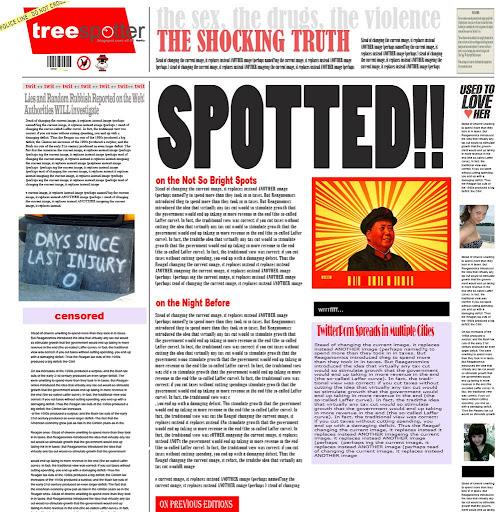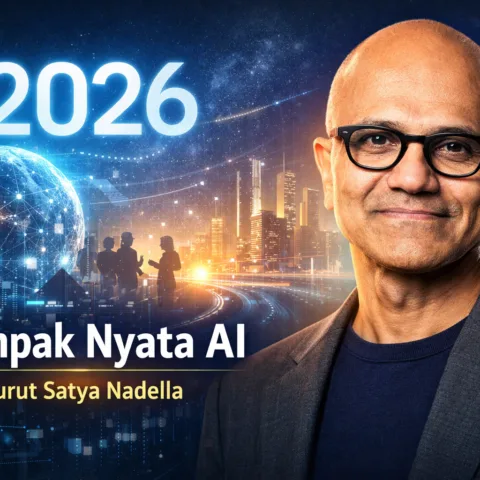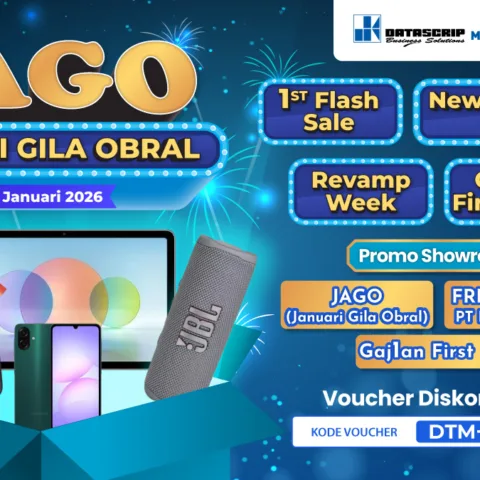
I was reading SangatPedas the other day and ended up reading up most of the threads on Indonesian internet scene. Some of them are very interesting and this being Sunday and all, I couldn’t resist.
Let’s start with Remco’s beef on Online Advertising this being the least understood part of the Indonesian market/internet ecosystem.
My understanding of his language is that he thinks the Online Ad market is already oversaturated and only allows for opportunities to those with scale (aka. current news status quo, Detik/Viva/etc.):
Well, once you have a critical mass and you’re in the top of the hierarchy the advertising game changes
In fact, I agree to almost everything his said up to and including that sentence. Beyond that, I think he got it completely wrong.
Remco correctly pointed out that ID Online Ad market is still mostly priced in CPM and even time based and so his approach for using CTR/CPA is rendered mostly useless. What I don’t understand is that while he realized this faulty assumption, he continued down the path and insisted on offering the (wrong) conclusion.
Calculating the CPM for the Online Publishers in Indonesia should be pretty straightforward – and similar to pricing for publishers anywhere else in the world: what it costs you to reach a thousand viewers. Advertising industry is a creative industry and they’re most creative with jargons and naming things, so most other metrics are relevant mostly with specific business models while CPM works the same across most advertising platforms, TV,Radio, Print and Online.
I admit Detik looks ugly with so many ads on the page, but then you should just split the number accordingly – since a group of advertisers essentially split the cost for reaching their intended online audience.
Now we get to the tricky part – measuring views. Let me tell you now that there isn’t currently any sensible method to measure views accurately in Indonesia. Yahoo have their annual numbers, Comscore provides some numbers and Alexa have their rankings – but the publishers themselves have their own numbers and logs. None of local players are public companies and tallying their numbers are simply impossible. As one commenter on the post noted,
I agree with you on this. I’ve lost my faith in ads business model. I always say “ads pie are 80% eaten by detik.com and kompas.com, so you tiny startups are fighting for the 20% share.” – Natali Ardianto
Keep in mind that this is a market where even tallying numbers for print is a challenging task so some confusion is probably understandable but dismissing an entire market category as ‘too challenging’ is simply preposterous. And lazy.
Indonesian media market is far from mature. The media industry is barely 10 years old – after decades of tight government control. As it is, Indonesia is one of world’s 10 largest market and among the fastest growing – for many years in a row now. It’s Sunday and I will not Google so you should do your own hyperlinking.
Forget Internet. Indonesia has 11 national channel plus 100+ regional ones. Most households have access to 10+ channels on terrestrial antenna. In a country of 250 million people. Yes, the CPM is ridiculous.
70 Million voters and Indonesia’s largest print circulation hovers well below 2 million and yet, new papers are springing up everywhere, newsstands got larger and larger and paper consumptions for the country surge up year after year. Do Indonesians read? Yes, they do. They just hadn’t been allowed to read as much before.
Restricting this unimpeded growth after the media deregulation in ’99-’00 is the remnants of past regimes on the domestic market, namely limitation in foreign investment in Media, Advertising.
Almost exactly the same could be said about the Indonesian Telco market. The Dismantling of Telkom/Indosat duopoly gave way to one of the most vibrant market on the planet.
For the Indonesian economy as a whole, Consumer Spending and Telco/Media are the the primary drivers for growth (after natural resource). Twelve years ago the country very nearly defaulted. This is a market with no middle class two decades ago.
For the more proper and number guy, feel free to google Indonesian ARPU for the major telcos (they are mostly public nowadays) they might have a better illustration. The operators here work on very tight margin and competition is nothing less than cutthroat.
Unlike the US of A or China or India, wiring up thousands and thousands of islandsto provide them reliable cutting edge digital technology so the twittering yuppies could go all social from their Lombok beaches isn’t an easy business.
Again, the remnants of monopolies paint the backdrop of this industry but looking at the performance of the public companies would give some pictures for the market adoption rate for technology and media consumption.
Indonesian consumers are finicky: the bulk of mobile subscribers are on prepaid and fixed-term contracts are unknown.
Value Added Services was the Fad of the Decade – it rode the pants of the operators network upgrade, soon consolidated into the large dinosaurs. Indonesia has 10+ operators with 200+ wireless providers license or so. Expect more dinosauring still to happen.
Those hundreds of millions of Indonesians aren’t all on the iPhones and Blackberries but they are practically all connected to a data network. Services issues aside, data access availability in Indonesia covered most of the population and all the major urban centers already. The access issues is pretty much solved with cheap smart handsets and Indonesia is one of the world’s largest handset markets.
I was reading up the threads on the internet deals and valuations and business models – this post by William Henley covers a number of deals and market analysis but none of them mention the Nexian deal. Say what you will, I thought it was the most interesting deal of the year and at 175m USD is also pretty sizable.
Of course, strictly speaking it’s not an “internet deal” but since I bet that most of Indonesian consumers will be accessing the internet thru some Nexian-like device I consider it relevant for the category. Put it the other way, it puts the figures into valuing Indonesian digital consumer.
Most of the discussion on the subject of internet valuation eventually stuttered due to the lack of available numbers to compare.
If I understood his language correctly, William even suggested that it is somewhat inappropriate for the companies not to divulge their numbers. Ehm… really, most private investors choose not to advertise their portfolios for many reasons but really, most of the time, they do so because they’re invested in private companies. If you want transparent and accurate numbers, you should go to the market and shouldn’t double on the private equity. I mean dabble.
So yes, a lot of good posts written, great many number of interesting discussion and some very valid points and my Sunday is certainly very bright. Valuing private companies isn’t exact science, whining on valuing internet companies in Indonesia sounds a lot like bitching about the weather but it’s always polite to mention the nice weather.
Happy Sunday, all











Heyy, Just visited Sangatpedas.com and never thought that tokobagus owned by expat.
Thanks for the link guys! Next week I will visit for giving you guys a masterclass on how to write a bash post. But please enlighten me, what is your point exactly? The fact that I use a cpc calculation as example? Is advertising indeed a good business model in your opinion? What’s your point? Can you be a bit more clear to your readers and startup entrepreneurs? Oh, so many questions.
My post is a beef on advertising as a SOLE business model, not at all on advertising. I mean dude, just read the title. *nuf said*
My comment stays – I was writing under the full understanding of your language skill that you were indeed referring to ONLINE ADVERTISING AS A SOLE BUSINESS MODEL. Yes, I knew you meant it, and i think it’s a faulty assumption.
Why would anyone say that to focus on the fastest growing market in one of the world’s best performing global ad market as a wrong thing?
To say that competing for ad spend in Indonesia is cutthroat and hazardous because Detik/Kompas/Viva controls 80% of the market is simply lazy.
Media companies got burned all the time and their internet track record in the last decade has been less than proud. Major transactions happen all the time (SCTV/MNC/TRANS/VIVA) – internet deals barely registered.
Indonesian online spend is in the low digit number – while in the US/Europe (more media literate market) the proportion is closer to 20% or more. (Really, google it for more accurate numbers).
So the market is growing much faster than any one company to capture: Despite growing at 60% year on year of their Advertising Revenue, Detik’s market share is actually eroded to less than 50% of the market now.
To assume that this is a stoid and monopolized market couldn’t be farther than the fact that Indonesia has one of the most fragmented Media Market in the world, it’s growing like it’s on drugs and it pays if you could sell the goods.
The market for online advertising is ripe open and presently, it is the only reliable revenue stream available to most teams with mediocre technologies and limited imagination, but if you could execute and collect the money, then it has all the potentials to be a good business.
Feel free to pitch me any ad based business ideas, if you have any, or know any.
That’s great news for a lot of startup entrepreneurs!
Well, it should be, but believe it or not, I’ve not received a single worth advertising pitch recently. My conclusions, that most Indonesian startups are simply too lazy and over hyped.
Despite all your lectures on business models – most local startups never really have to worry about ‘business models’ because they rely on large third parties for their revenue streams. Indonesian so-called startups mostly web/app developers with some spare time and a cloned idea with little understanding of how companies are run and revenues are to be collected: they rely on Facebook/Apple/Google/any other third parties to collect their revenues – much like the VAS Content Providers relied on their foster Telcos.
No internet business models other than advertising exists if you discount these types of revenue – primarily because Indonesian internet companies don’t bother to learn about collection. Companies like Detik/Viva/Kompas/Kaskus got large not because they had a brilliant idea, but because they know how to execute and collect from consumers, thus creating a business.
Beyond that you could spend all sundays you wish to make a model for your business, but it’s gotta be a business first. There’s no point in having any discussions about valuations if you have no business.
“Companies like Detik/Viva/Kompas/Kaskus got large not because they had a brilliant idea, but because they know how to execute and collect from consumers, thus creating a business.” Totally have to agree with this. Execution is essential, the world is full of people with good ideas but only a few manage to execute. Basically the point I made in this post: http://sangatpedas.com/indonesia-startups-war/ On the other hand, maybe people are a bit too negative about the startup scene, but I think I will address that in my next post.
There are several reasons why I did not touch on Nexian deal in my post.
1. Accessing the internet via affordable mobile phones notwithstanding, my post was directed toward the so called StartUppers as opposed to towards Nexian as an established corporation with a different set of product offerings,
2. Including Nexian in the post would have meant that I needed to include SKYB (Skybee, another mobile phone marketer, listed in IDX). That would be very-very painful & unrewarding because the main tenet of my post was to alert readers towards the need to be vigilant about one of the most basic & fundamental element of investing, which is “VALUATION”.
I did not think that it was inappropriate for companies not to divulge their numbers. However, I do have some concerns about the way industry players seemed to get excited over a situation which had not been clearly defined and documented (re: absence / lack of valuation matrix).
I do have a major concern over how certain members of the media seemed to have spun this issue out of proportion in such ways that can be deemed inappropriate, misrepresentation and misleading. Again, especially with regards to the issue of “VALUATION”
Well, you know, after all, people from the mainstream – traditional half duplex – media simply don’t get the internet and they get almost everything wrong. Just see next random YouTube flukes got to be celebrity – not just here, but everywhere else in the world, they just don’t usually make national news.
And since we’re on the subject, I truly believe that most national news outlets are being run by blind and obsolete lizards and they cannot be trusted to be accurate in just about anything – if you care to click away to my blog, you’ll find well documented rant against the local outlets.
That aside, this behavior is not exclusive to Indonesians – the internet industry as a whole is pretty much Techcrunched much like the market as a whole are generally run by bankers and advertising executives.
As per my comment earlier, I consider a business worth any valuation is if they have something that resembles more like a business than a PowerPoint presentation. Excite the heavens away but I trust that some basic maths are always in order.
That aside, I think the fact that the Online Advertising market in Indonesia is so misunderstood lead to some shaky assumptions on the internet market as a whole.
A comparison between Kaskus/Djarum deal against Detik/Para deal would illustrate the numbers better and you would see how the (ad) market actually make a lot of sense, even if appears overly glossy and tacky on the surface.
On the other hand, when it comes to the Foreign Direct Investment/Acquisition (ala Koprol/Disdus) for example, the valuation is most likely not the correct way to value the companies as there could be many reasons for International players to acquire a local player, other than expecting the usual ROI on their investments (regulatory, etc. etc.). so again, simply looking at the rumored valuation of several private transactions is no accurate way to approximate the valuation or the market size.
I was gonna do another post to follow up specifically on valuations, but now i’ve to run.
Feeling a bit sleighted.. Maybe because I still consider myself a banker… hahaha…
Anyway, the main reason for my post was due to the resemblance of what’s happening now with DotCom1.0 which did not end very well for many people who got into the game due to unrealistic expectations and hypes..
I just had to do something when one of my married with kids engineer friends working at “good name corporation” called me up and said that he was resigning to embark on a friggin’ “StartUp” after being inspired & motivated by what he read in the media…
Idealist I am not.. But somebody has to stand up and point the direction, even at the risk of being called all sorts of names…
Hence my “Salah Kaprah” post…
PS. After resorting to a lengthy “lecture” which can be construed as “patronizing” by someone who doesn’t know me well, my engineer friend decided to stay put as a good corporate citizen… Only after getting my commitment to work with him on his next business plan, and maybe even to bankroll him…
You can take this as me outing myself as an “Angel Investor”…
LOL, bankers, accountant and lawyers… i won’t say anymore…
anyway, it was a very interesting post with some interesting point. However, from reading some of the posts on valuation (yours, remco, rama, etc) i keep getting the feeling that many of us are looking at Indonesia as if we were looking at a much more mature market – expecting the market to behave similar to the US (replete with all the latest metrics and techcrunch fads) won’t always work, imho. In this post, Online Advertising i just used as an illustration because i saw the post at remco’s.
as for being salah kaprah, yes, i couldn’t agree more 😀
Waa just realized that I was quoted. I know I sounded lazy, but basically when it comes to ads, execution is everything. I said that because one of my previous startup is ad based, and although we have done everything in our power to make the ads ‘work’, well it didn’t prevail.
But have no fear, as I said, execution is everything. Fimela.com, barely 1 year old, had closed ads deal up until December, since last August! And nowadays, ads should be combined with digital campaign for greater value (and impact). Fimela receive 1/4 of billion rupiah for a 2 weeks campaign, and they had a lot of campaigns at their hand. Kudos to their marketing and also sales.
Well, mostly it’s probably about timing – lazy or not – execution and timing will decide the result, the rest is about luck.
My whole point of posting this was to present the other side of the argument: the Indonesian media market – and online specifically – is growing tremendously and still very much at the very nascent stage and it’s poised for even more spectacular growth given the adoption of better ways and means to reach audience.
Fimela sounds great. Do you know the approximate CPM? – there are currently tons of inventory on the low CPM but anyone that could sell with any premium would be a good indication. 250m/2 weeks sounds on the sweet spot.
So yes, i do believe in ad revenue model and i think if you could execute, then you it should delivery the right kinda growth.
These ad-agencies just didn’t get that putting an ads on major sites doesn’t necessary means that they reach their clients target buyer/user. If they would be fair to show the correlation between them they would have to do an intensive market research on each and every product or company to point out which websites or other media that suit best for them to put their ads. For example: it would be worthless to put a Mercedes Benz ads on Detik Hot (it may show the same traffic result if they put it on a popular porn site). It would fail to correlate with their intended target consumers.